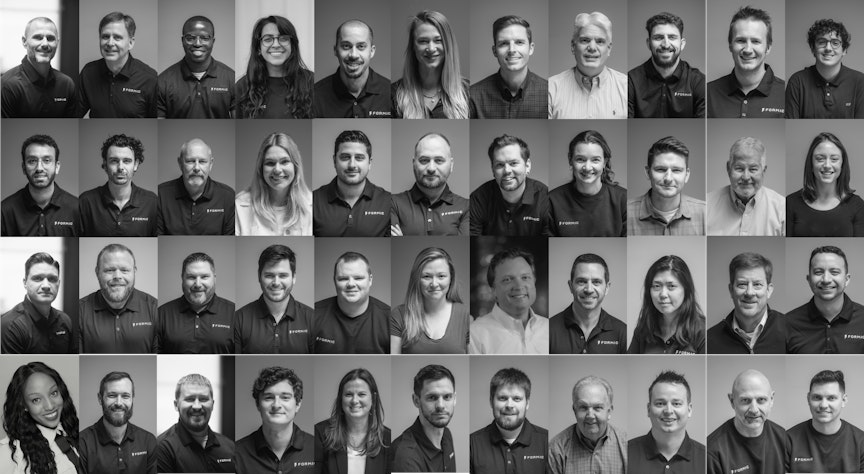Recently we published a blog discussing automation for manufacturing CFOs. We have received some questions on that post and so this is a follow up to that original post to answer those questions.
Question: Should I be concerned if I install Formic’s automation solution that my manufacturing process could be negatively impacted if Formic’s machines break?
Answer: Although there is always a risk that a machine can break, Formic has designed our process to limit the risk of downtime based on our 5 Lines of Defense.
Formic’s 5 Lines of Defense are:
1st: Remote Monitoring and Preventative Maintenance - Formic’s analytics engine monitors performance and flags issues proactively
2nd: Support Line - Formic’s support staff can remotely log in and resolve basic issues
3rd: Basic Remote Debugging - Formic provides training for our customer’s operators to do basic debugging with guidance from our engineering team
4th: Onsite Visit - Formic’s engineers, or our service partners, come on-site to address an issue
5th: Swap Out Equipment as Needed - Formic has replacement parts and can swap out equipment as needed to limit downtime
If in spite of our best efforts, our system doesn’t perform, we also provide coverage to our customers with the Formic Guarantee (https://formic.co/formic-guarantee) that provides hour-for-hour credit for any downtime.
Formic is dedicated to our customers’ success. We would recommend you compare the above to the commitments you might get from vendors when buying automation directly.
Question: My company has decided to implement automation, but we are thinking of purchasing and installing the automation ourselves—why should I consider Formic’s solution instead?
Answer: Formic encourages companies thinking about automation to consider the pros and cons of purchasing and installing a system themselves versus Formic’s Full-Service Automation. The following framework has helped manufacturers think through all the implications of automation:
(1) Is automation a core competency (or does the company want to make it a core competency)? The knowledge and experience to successfully develop automation parameters, purchase, install automation and manage it going forward are competencies that many small/medium businesses do not have. Although those capabilities can be built internally, that will often require a significant investment of time and money. Paying upfront for consultants with high hourly rates can sometimes lead to mis-alignment of interests and idle systems. The interests of Formic and our customers are aligned—if our systems don’t work to their required parameters, Formic loses money;
(2) Does the company understand, and are they willing to bear, the risks of deploying automation? Formic’s experienced engineers look at each potential installation to make sure it can be done successfully (both upfront and ongoing). Formic has experience understanding and mitigating risks that come with a potential installation so it can be successful—and we are willing to guarantee it with the Formic Guarantee https://formic.co/formic-guarantee. We’ve seen too many examples of automation sitting unused because no one at the facility knows how to reprogram it, and the costs to hire an integrator are too high.
(3) Would an operating expense of paying for a service to Formic be better for the company’s financial position versus the capital expense of buying (including with financing) automation/robotics? This decision will be different for every company and every situation, however, additional factors that would go into this thought process would be items such as: (a) whether the cash that is used to purchase an automation system could be better spent in growing the company’s business in other ways, and (b) if debt (loans or leases) is used, what is the impact on financial ratios and borrowing facilities of additional leverage.
Question: How should I think about automation/robotics and Formic’s offering in terms of cost of capital if I would purchase, install and manage automation on my own?
Answer: Formic’s solution isn’t a purchase (or even a lease), but an alternative to scarce labor that many manufacturing companies can’t find. Formic suggests that the way to benchmark and consider our solution is in relation to fully loaded labor costs and also Formic’s system uptime versus labor turn-over and absenteeism rates.
Question: My manufacturing facility already has machines and lines that are underutilized. How can Formic’s approach provide a solution for this and not increase the asset utilization problems I already have?
Answer: Efficient asset utilization is an important aspect of any manufacturing facility. Although every situation is different, the Formic team usually observes that underutilized assets are often a key indication that automation should be strongly considered. If portions of a plant are working above capacity and other areas are working below capacity, this is often an indication that the above-capacity areas may be a bottleneck where automation could relieve at least some of the capacity constraints. As every situation is different and unique, the Formic team will visit and study each manufacturing situation to determine if automation could be a solution. As Formic loses money if our deployments don’t work, our teams make sure that before we install an automation solution, that it is a “solution."
Click here to take a look at a real world ROI calculation.


